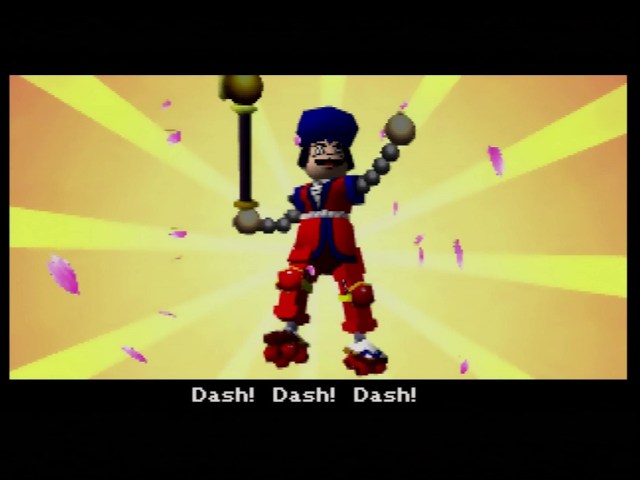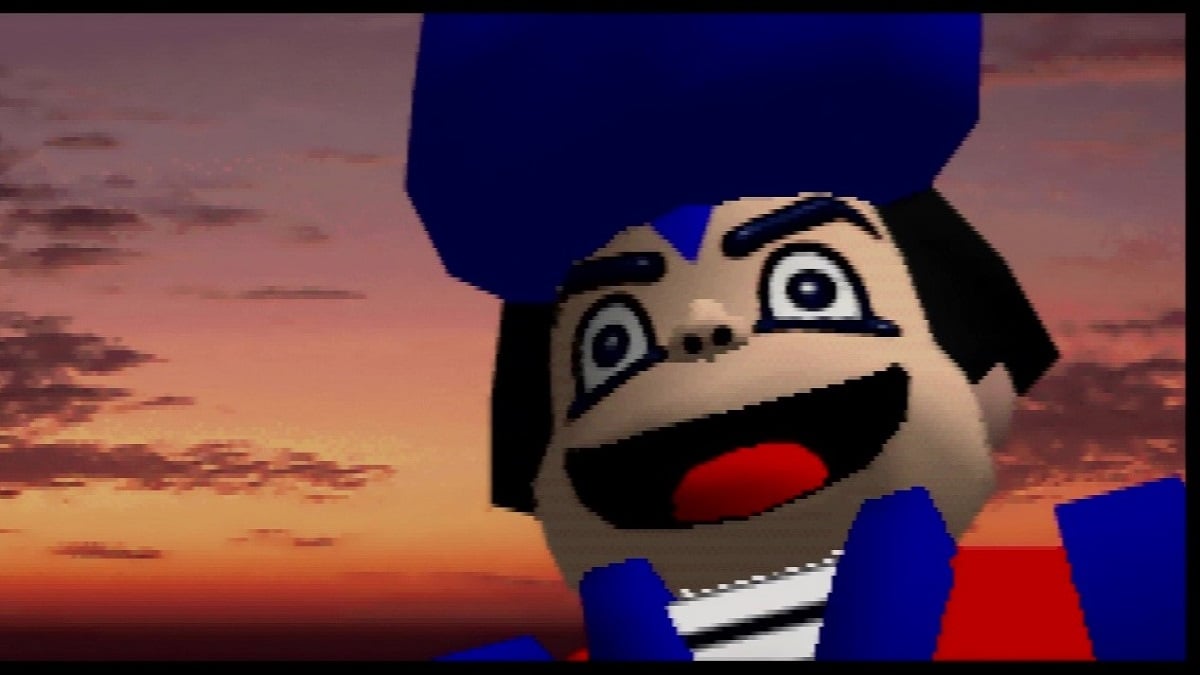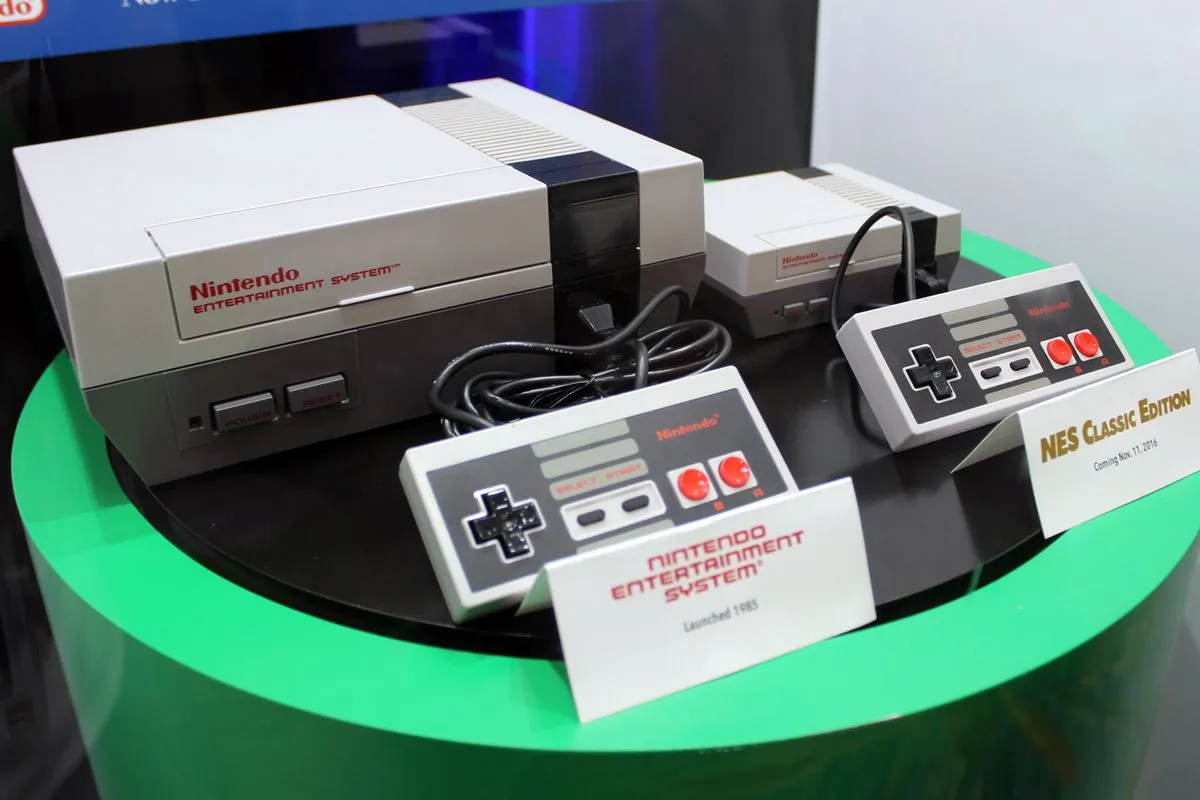Dash! Dash! Dash!
It’s a great injustice that we never got to see more of Goemon in the West. While you can count the number of games we got over here on enough fingers if you have them, it was one of Konami’s flagship properties for over a decade in Japan. Part of the reason why we didn’t get more over here is that they’re just so Japanese. It takes place in Feudal Japan and ties in more local pop-culture references than you can shake a pipe at.
Despite this, I was enamored by 1991’s Legend of the Mystical Ninja when I was a kid. It was fun to just mess around and explore in. So, when Mystical Ninja Starring Goemon wound up being localized, I was all over it, and it was one of the most fascinatingly confusing moments of my young life.

Breakdown!
I feel pretty reasonably well-versed in Japanese culture and history as a foreigner who only visited there once. But that’s now. In 1998, when Mystical Ninja Starring Goemon launched, there were very few avenues to learn about Japan. The internet wasn’t really as widespread and diverse as it is now, and any media that we got from the country was often heavily filtered and painted over to make it more palatable to Westerners.
Mystical Ninja Starring Goemon opens with a parody theme song with subtitled vocals. The closest I had ever seen to anything like it was some old Godzilla movies. Subtitled anime wasn’t super common in my part of the world just yet, so the vibe was completely lost on my younger self.
Beyond the culture shock, though, Mystical Ninja Starring Goemon proceeds like you already know a bunch of these characters when none of them were in Legend of the Mystical Ninja. Yae, Sasuke, the Wise Old Man; at best, they only had brief appearances in the SNES title. The most bizarre addition was the giant robot, Impact.
Impact was introduced in 1993’s Ganbare Goemon 2: Kiteretsu Shogun Magginesu on Super Famicom. They’ve been a major mainstay in the series since then, most prominently in Ganbare Goemon Kirakira Dōchū: Boku ga Dancer ni Natta Wake, which was a story about them trying to become a celebrity. This is even referenced in the game. Impact talks about traveling to Hollywood, which would make sense if you played the previous game, but it’s just nonsense without it.
So, within Mystical Ninja Starring Goemon, a giant robot shows up without explanation, complete with its own (absolutely awesome) theme song.

Ore wa goooorgeous~!
Not that Mystical Ninja Starring Goemon makes sense without the missed references. The story involves the “Peach Mountain Shoguns,” a group of kabuki theatre actors (possibly from space), who appear and turn Oedo castle into a European castle to use as a stage. Their plan then escalates for no reason, and they eventually just straight up steal Kyūshū.
You could easily compare Mystical Ninja Starring Goemon with The Legend of Zelda. It’s largely an overword-to-dungeon affair, but it’s a bit more linear than that. What strikes me is just how badly the game actually flows.
There’s a bizarre, mostly-naked fortune teller who screams “PLASMA!” at you and will tell you what you should do next. That’s not strange. A Link to the Past had the same thing. However, at one point in Mystical Ninja Starring Goemon, the developers seemed unable to figure out how to drop a hint on where you should go next, so one of the characters straight-up just suggests going to talk to the fortune teller. They could have just told me to buy the guide.
It’s helpful to have the fortune teller, though, because it’s not always clear where you should be going. There’s at least one moment where the fortune teller completely skips a step. You first need to find a certain power-up to overcome an obstacle, but Mr. Plasma just tells you to go to that obstacle with no way for you to overcome it.

Ore wa Chaaaarming~!
This would be easier if exploration was better, but it’s a mixed bag.
To be fair, I think the Ganbare Goemon series is better when it’s representing a wacky tourist trip through feudal Japan. The series has no set formula, just a set of standards that keep recirculating. The one that comes up often is having Goemon and crew venture across all of Japan, stopping at hotels and restaurants and getting distracted by arcade games. Mystical Ninja Starring Goemon nearly gets this perfect.
The world map is a segmented representation of most of the country. You literally walk across a minimalistic Honshū and Shikoku. There’s a map that helps you track your progress. It’s really awesome. The only problem is: the map is useless, and it’s hard to tell which direction you’re going.
A lot would be alleviated if you could more easily tell where you were going, where you had been, and where you still need to go. Then, if you felt stuck, you could just consult the map to see where you haven’t been. That’s not really possible in Mystical Ninja Starring Goemon’s world. So, while having the game drop overt hints on where you need to go next was an optional part of A Link to the Past, don’t be surprised if you’re throwing some coin to the Plasma guy.

Ore wa fuuuuunky~!
I really love Mystical Ninja Starring Goemon, but it’s more of a good time despite its problems. It both suffered and benefitted from being an extremely early N64 game. A year earlier, Super Mario 64 demonstrated how a 3D platformer should work, and Mystical Ninja Starring Goemon had not received the memo yet. You kind of get the feeling of talented developers struggling with new concepts.
As such, camera control is relatively non-existent. Usually, a game will, at the very least, allow you to reset the camera directly behind your character, but that’s not an option here. The only way to get the perspective you want is to carefully set it so your character faces there, and then after a lot of hesitation, the camera will swing in behind them. It makes a lot of the platforming feel really icky. Thankfully, you won’t find a lot of instant death here. If you miss a jump, it usually isn’t a huge problem to just attempt it again.
On the other hand, I find the early 3D jank to be rather charming. You can see where the ambition exceeded the expertise. There were obviously a lot of great ideas about the project, but a lot of problems implementing them. The quality of Mystical Ninja Starring Goemon has many tall hills and low valleys, and it’s interesting seeing them both.
The music is just excellent, however. The series has always had some great tunes, and it’s no different on the N64. The vocalized music is a bit of a weird choice, given the N64’s space limitations. It was definitely worth it, though, as those songs stand out in just making the game weirder.

Aaaah Impakutoooo~!
The Ganbare Goemon series changed the formula and gameplay style constantly. There would be a follow-up to Mystical Ninja Starring Goemon called Goemon’s Great Adventure. While it would largely be a more solid game, overall, it’s more of a straightforward sidescroller.
I really wish Konami made another attempt at Mystical Ninja Starring Goemon’s approach. It did a lot of things right within the conventions of the series. It just needed some more love. With an expanded world filled with more interesting landmarks to see, it would deliver on the “wacky tourism through feudal Japan” angle that the series so frequently revisited.
Konami has all but ditched the series. The most recent game was 2005’s Ganbare Goemon: Tōkai Dōchū Ooedo Tengurigaeshi no Maki on DS, and the last major appearance of the crew was in a Gods-forsaken pachinko machine. That might as well be the gravestone for the series that Konami left behind in their endeavor to intentionally hurt their fanbase. There were some Mii costumes from the series in Ultimate Super Smash Bros., but that mostly just shows that Nintendo cares about the series more.
As for Mystical Ninja Starring Goemon, it is a very N64 game. It’s enjoyable today, but only if you’re inoculated against early-3D jank because it is rife with it. Despite that, you can really see the life behind its eyes. Or you could before Konami smothered that out with a pillow.
For other retro titles you may have missed, click right here!














Published: May 5, 2023 9:00 PM UTC